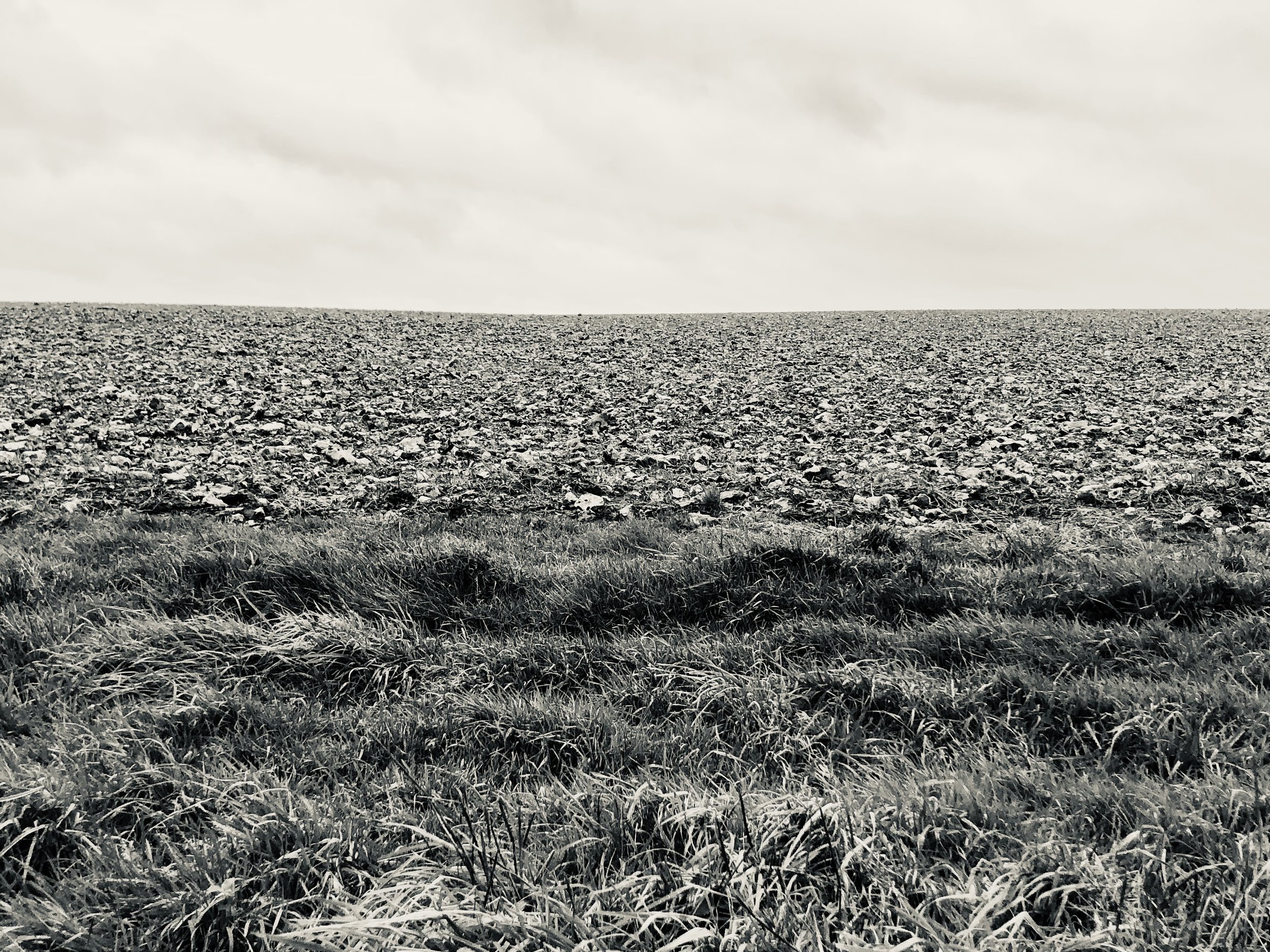ESSAY: Are The Fields Empty?
Issues of climate emergency have arisen in my practice. Bruno Latour speaks of the thin sliver, a few kilometre above and below the surface of the earth, where all known life forms are found. He explains, it is…
“‘critical’ because it is far from equilibrium; because it is fragile; because it is disputed; and because it is an interface between the deep earth below and the vast expanse of space above. They [the scientist] call it a ‘zone’ because it is still largely unknown; because it differs from what used to be called ‘nature’; because it has topography very different from that of a planet viewed from space; and above all, because its entire variegated fabric has been engineered by life forms over vast eons of time”
Latour stresses the extent of how little is known about this ‘zone’ and the complexities of life forms within it. He brings up the notion of how we view the planet as a surface and contributes much of this to access to images taken from space that only look on and down at the earth as an observer and an outsider. Potentially encouraging a sense of dislocation and removing connection to consequence and blame, the Critical Zones exhibition calls on not only scientists and politicians but artists and activists to respond to the…
“general movement towards the soil and new attention to the ways people might inhabit it”
As a consequence of Latour’s philosophies and the organic nature of my practice, focus has increased not only towards the surface but underneath it and within. Carelessness of the unwanted is highlighted by the excess of garbage that has resurfaced from the soil. Thought to be ‘taken care of’ by burying it beneath our feet and out of sight, the objects and fragments are exposed and the soil has churned, turned and revealed its secrets.
John Scanlan defines garbage as…
“…leftover matter. It is what remains when the good, fruitful, valuable, nourishing and useful has been taken”
He goes on to describe it as the…
“mucky handprint of a being that carries on regardless… it is the ghost that haunts presence”
The trace, the ghost that once was, is evident in the found objects and fragments, reflecting place, activity and presence. But what of the soil? Are there ghosts in the empty fields I see when walking through the countryside. Circling in close proximity to the point where the objects were discovered, I wonder what they hold and contain, out of view. Capturing fields as photographs, aligning the horizon along the top third of the image, I grant the land and soil the majority of focus.
Emptiness is a component that is emerging in the work. The So What Factor is becoming evident but I aim to challenge and question the notion of what might be considered empty. For a start, the soil is full of life and the means to life. Awareness of the need to care for the soil is becoming more evident and urgent. An increased understanding of the life-giving properties that are contained within soil has come to my attention, simultaneously with the knowledge of the stress we, as a population, put on it. My response to this concern has been to use the images taken of fields, and to apply new methodologies of printmaking in order to push the work into new planes of being. As the image passes through the processes of screen printing, it undergoes a loss of detail and renders the image a trace of itself. The empty field remains explicit but as a multitude of visible disconnected dots. Not content to finish there, the prints are subjected to ephemeral marks drawn across the image. Tracing excavated nails with a feather and black ink leaves awkward and delicate marks. Hovering in front of the landscape the wispy nature of the marks are intended to represent something not quite there. Something that could slip from reach but nevertheless leave a mark and disrupt the space.
This recent work brings up a lot of questions and outcomes yet to be resolved in the practice. It introduces and opens a dialogue to concepts of both emptiness and presence. Where the photograph and the print move further from the source as each stage progresses, the drawing encompasses a direct connection to the hand restoring a sense of presence. At this stage the aim of the work is to highlight trace and ephemerality of presence within the landscape. It also seeks to watch the land carefully and in the process of doing so, encourage the very nature of care. I heard Daro Montag speak at a Climate and Biodiversity Emergency Symposium at the Surrey University recently. He devotes much of his practice to soil and introduced me to a new approach that looks at soil, not just as formal material but as “prima materia”.
“There is now a new generation of artists who examine the biological, chemical and even alchemical properties of soil.”




